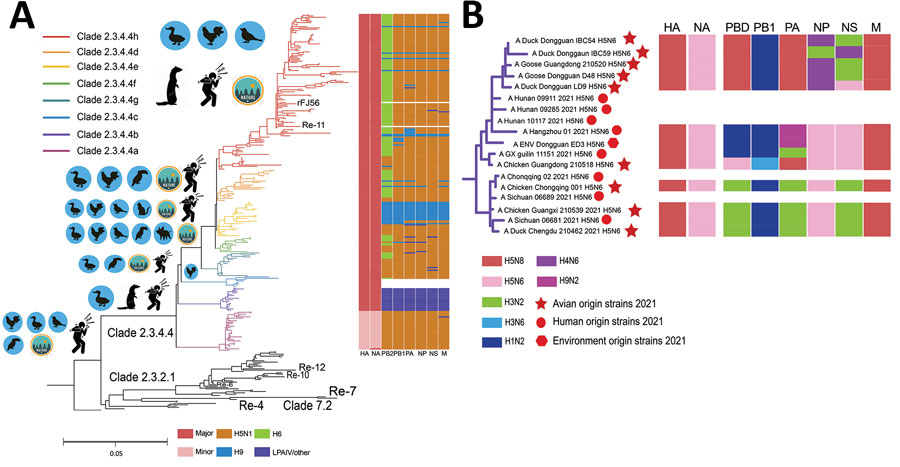Volume 28, Number 8—August 2022
Dispatch
Novel Reassortant Avian Influenza A(H5N6) Virus, China, 2021
Figure 2

Figure 2. Visual depictions of avian influenza A(H5N6) viruses from China, 2021, and reference viruses. A) Maximum-likelihood phylogenetic tree showing comparisons with 332 H5 reference sequences downloaded from the GISAID database (http://www.gisaid.org). The Guizhou strain (A/Guizhou/1/2012) was set as the tree root, and all influenza A(H5N1) strains were set as the outgroup. Re-X/rFJ56 represents vaccine strains. To the left of each clade are images showing the corresponding primary hosts. On the right side is the dynamic reassortment profile of each avian (H5N6 virus in the phylogenetic tree; colors represent gene segments. Colored boxes below the graph correspond to possible potential donor viruses. B) Novel avian and environmental origin H5N6 strains. Red circles represent human strains (Appendix Tables 13–17). HA, hemagglutinin; LPAIV, low-pathogenicity avian influenza virus; NA, neuraminidase; NS, nonstructural; M, matrix. PA, polymerase acidic; PB, polymerase basic.
1These authors contributed equally to this article.